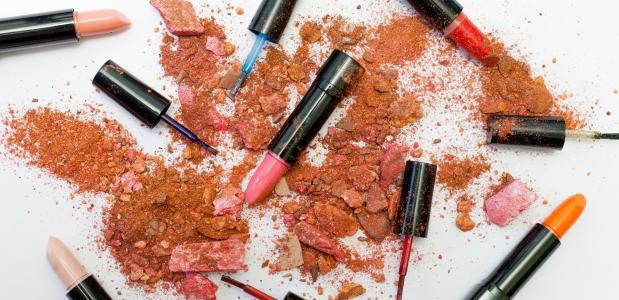
Detox Your Cosmetic Cabinet
20 maart 2019 - Koh Samui Holistic Resort
When considering a detox, most people think of the food they eat, or not eating anything at all, to help rid their body of toxic or unhealthy substances. But, what you put ‘on’ your body is just as important as what you consume. Pick up any personal care product and try to pronounce the ingredients. Many contain large amounts of chemicals–natural and synthetic–and we are just beginning to recognise the harmful effects that it can have on our bodies.
Why it Matters
The cosmetic and beauty industry, as a whole, is unregulated and laws vary from country to country. The European Union, which now consists of 28 countries, has more strict and protective laws for cosmetics than the United States. The EU Cosmetics Directive was enacted in 2003 and most recently revised in 2013. The EU law bans more than 1,300 chemicals from beauty products that are considered harmful and are known or suspected to cause cancer, genetic mutation, reproductive harm, or birth defects. In contrast, the Food and Drug Administration in the US has banned or restricted only 11 chemicals from cosmetics. Unlike the United States, EU law requires safety assessments of cosmetics before they enter the market, registration of cosmetic products, and acknowledges that certain chemicals do not belong in beauty products regardless of the concentration factor.
According to a study done by the Environmental Working Group, the average woman uses 12 personal care products a day, containing about 168 unique ingredients. Research on long-term exposure is lacking in the scientific arena, especially on the effects of chemicals when they are combined. Also, scientists have reported that under the right circumstances–factors like temperature and exposure over time–the skin can absorb certain things to the point where they affect our bodies.
How to detox your cosmetics
To start detoxing your beauty routine, begin by taking stock of all the products you use and see what you can substitute with safer, more natural choices to detox your entire body, on the outside and the inside.
Research the Ingredients Depending on where you are, there may be no legal standards for personal care products labelled as natural or organic, so look beyond what it says on the bottle and read the ingredients carefully. Thankfully there are some ways to make this less overwhelming, including some apps that will tell you which ingredients to avoid.
Simplify Your Routine Choose products with a simple ingredient list and fewer synthetic chemicals. A good rule of thumb is that if you cannot pronounce it, it’s probably best to avoid it. For example, pick up your toothpaste and try to pronounce the ingredients. Some toothpastes include toxic ingredients, such as Triclosan and Propylene Glycol, that can easily absorb into your bloodstream. Stick to products with only a few ingredients listed and avoid synthetic perfumes by skipping products with “fragrance” on the label.
Know Which Ingredients to Avoid Read what’s inside before you apply anything to your skin, lips, or hair. The David Suzuki Foundation has published a list of 12 key ingredients to steer clear of in its article “Dirty Dozen: cosmetic chemicals to avoid” — a great place discover the ugly facts about your makeup.
What Products to Ditch First
To detox your cosmetic cabinet, prioritise by assessing what you use the most. For many women, this means replacing your current body lotion first. Skincare products are probably the one thing you use the most of and most often. Your skin, with its large surface area, has the most potential for harm. Substitute body lotion for an all-natural and organic alternative such as 100 percent cold-pressed coconut oil. Look for natural option, such as essential oils for perfume and hair care products. Ditch your deodorant and use one made from coconut oil, baking soda, and shea butter. Slowly replace your makeup over time, opting for products with environmentally safer ingredients that are natural. Look for organic beauty products that are sustainably sourced and manufactured and packaging in a biodegradable or recyclable container so they are less harmful to the environment.
Even better, replace store bought beauty products with homemade ones. It can be cheaper, and you don’t have to worry about ingredients you can’t pronounce since you will always know exactly what’s going in them.
Natural Cosmetics To Make At Home
Try some do-it-yourself beauty recipes; you’ll be surprised at what you can create on your own. Some personal care products are easy to make with ingredients from your kitchen. There are numerous books and websites that share their all-organic recipes. Stock up on natural ingredients and use them in a multitude of ways for the hair, skin, and cosmetics. For starters, coconut oil is a favourite since it has numerous uses for the hair and body. For teeth, baking soda mixed with hydrogen peroxide is an effective whitening toothpaste that also kills bacteria.
Useful Apps
Apps like Healthy Living and Shop Clean are useful tools for locating good clean products. The Healthy Living app from Environmental Working Group rates more than 120,000 food and personal care products and the Shop Clean app by Think Dirty is user-friendly and ranks the safety of products on a scale of 1 to 10, and provides more eco-friendly alternatives for when you do your cosmetic cabinet detox.
-





